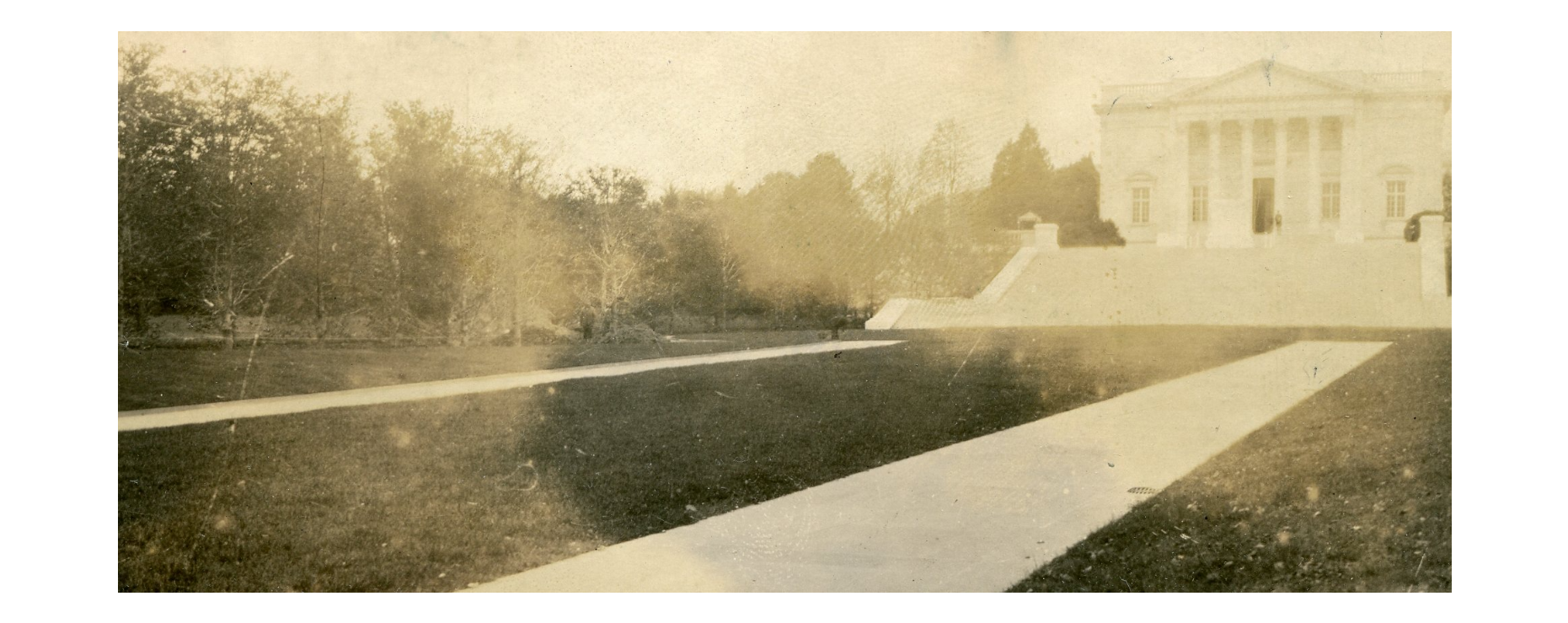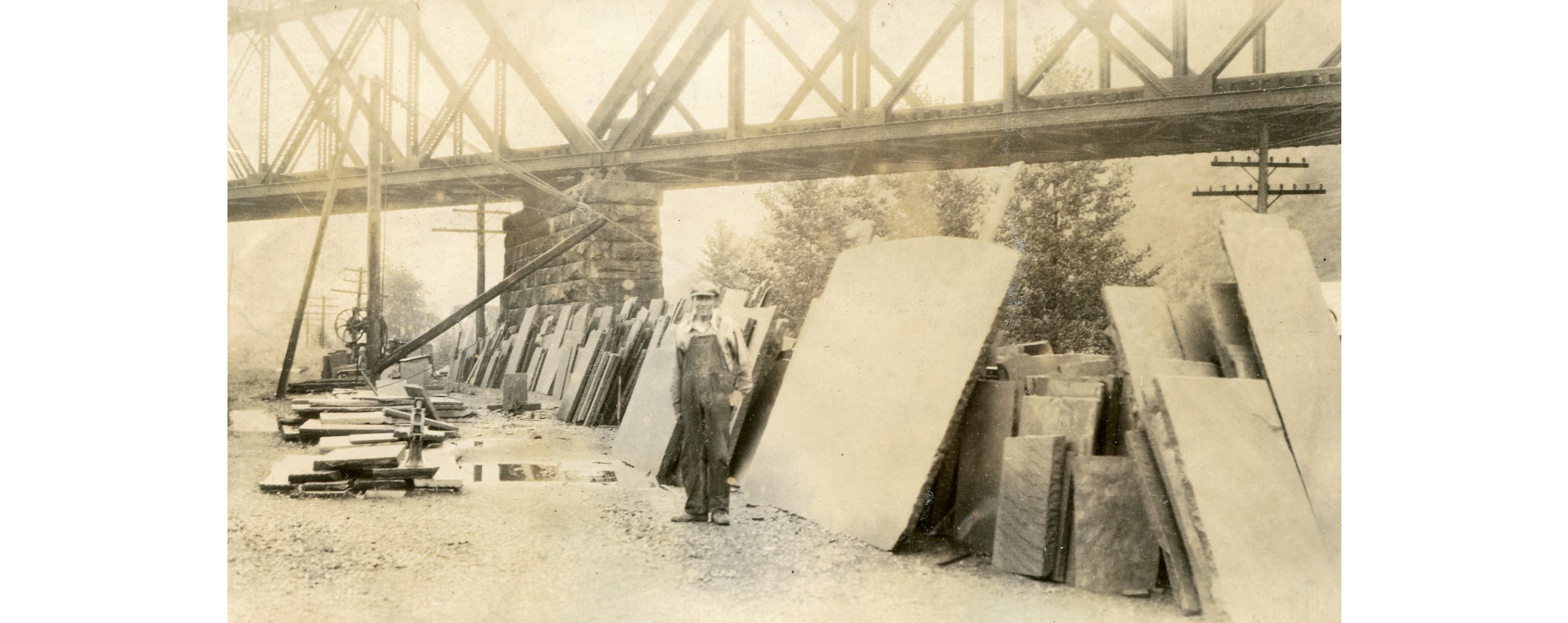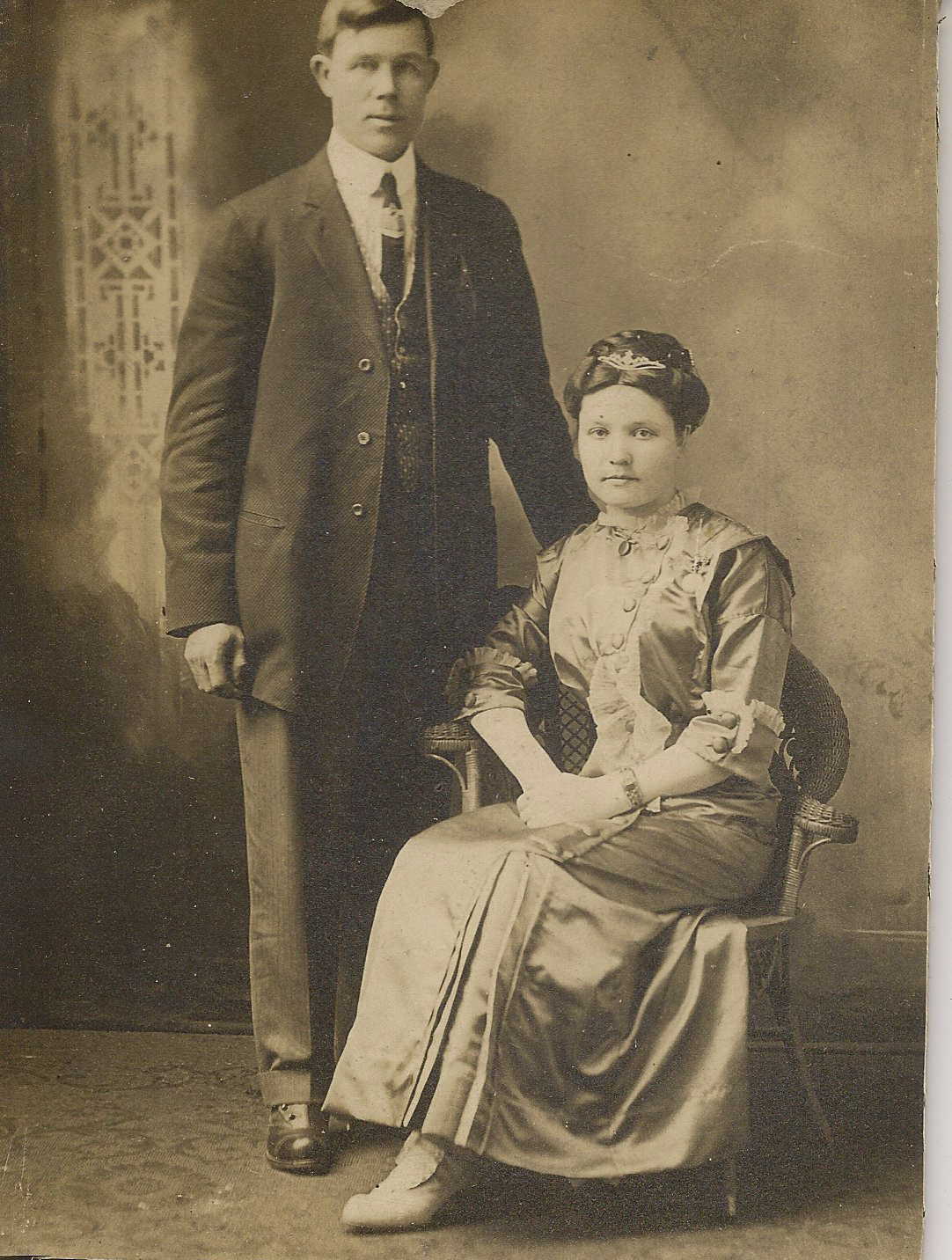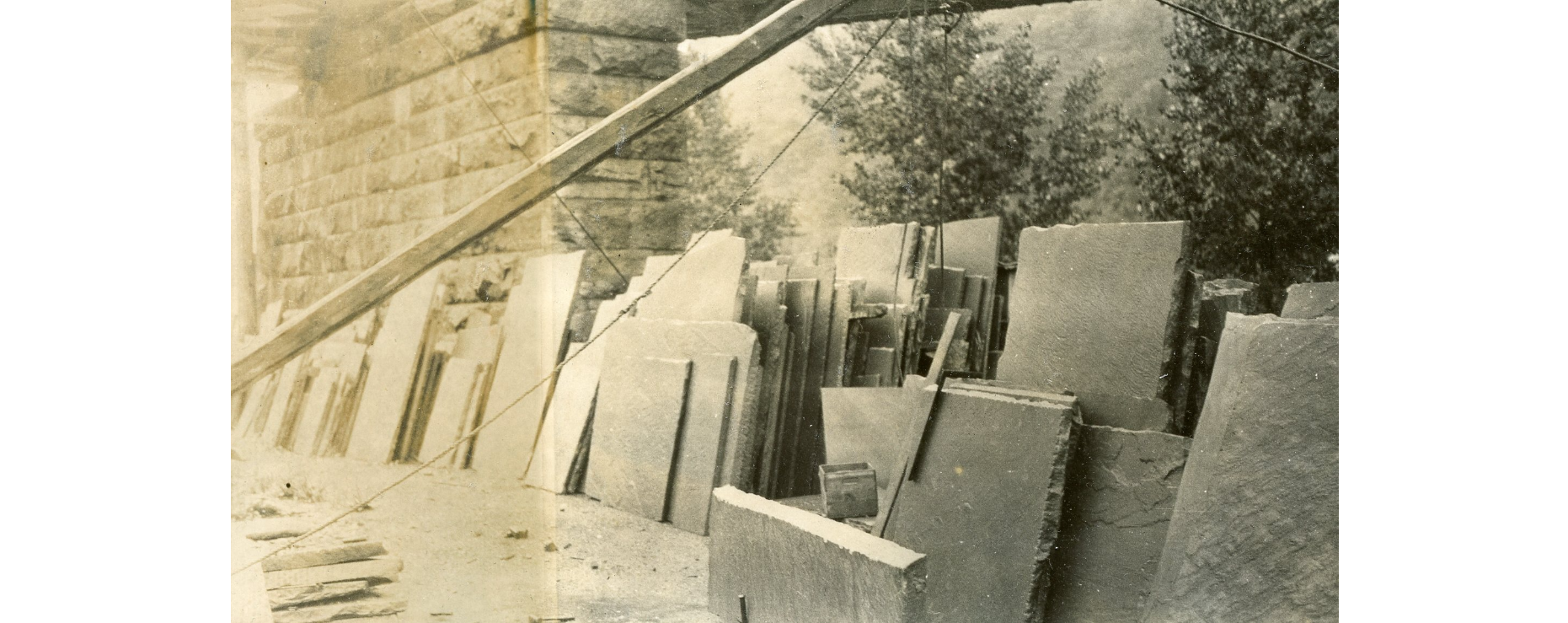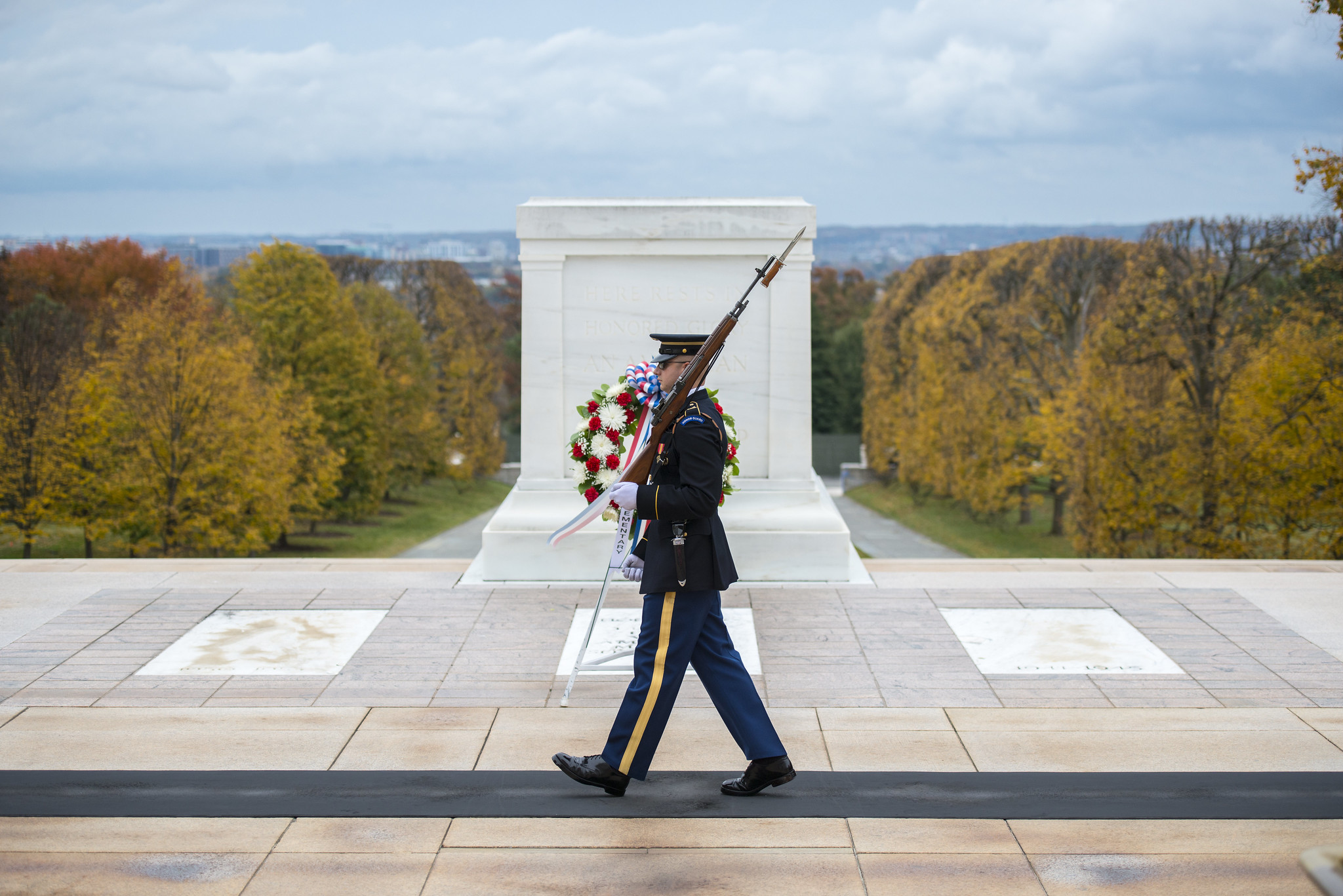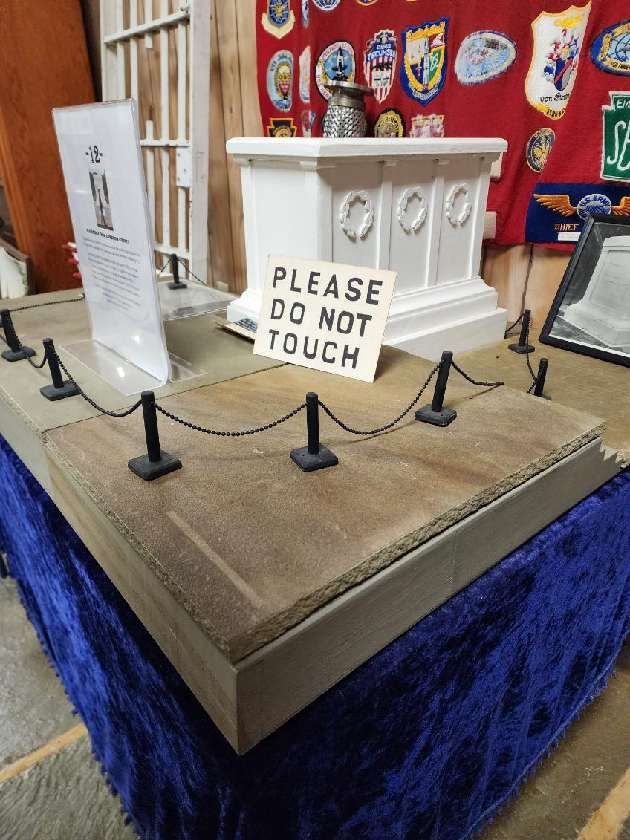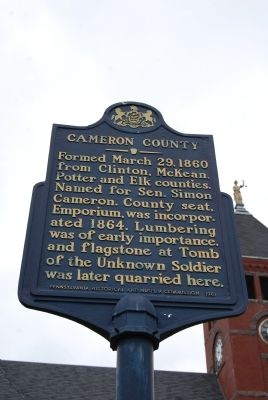By Ed Byers
Flagstone from the PA Wilds graces the Tomb of the Unknown Soldier
A hunk of Cameron County history is set in stone
“Here Rests in Honored Glory an American Soldier Known but to God.”
These hallowed words are emblazoned on the Tomb of the Unknown Soldier in Arlington National Cemetery, the final resting place for America’s unidentified service members, providing a place for reflection on those who have served our military and made the “ultimate sacrifice.”
The Tomb is one of the most recognized in the United States, up on a hillside overlooking Washington D.C.
Image: Cameron County Flagstone in the Walkway at the Tomb of the Unknown Soldier – courtesy of the Cameron County Historical Society
But 250 miles away on a hillside in Cameron County in the PA Wilds is a quarry where flagstone for the paved walkway of the Tomb of the Unknown Soldier was mined.
It was Sinnemahoning stone mason August Johnson who quarried the stone and made the flagstone rough cuts for the Tomb’s walkway in 1931.
Image: Stone Mason August Johnson at the J.J., Robinson & Co. Quarry – courtesy of the Cameron County Historical Society
Johnson’s artisanship was such that his flagstone was not only laid around the Tomb of the Unknown Soldier, but also around the swimming pool at the White House.
This particular cut of flagstone, known as Pennsylvania Bluestone, was chosen by the Tomb’s architect because it is perfect in durability and resistance to wear, used in flooring and staircases nationwide.
There was one more thing the architect of the Tomb wanted in choosing stone – a variety of colors, especially green. The Sinnemahoning quarry had some of the rarest greens of all, which were found in vast quantities along the First Fork area going up Route 872 just outside town.
Image – August Johnson and wife Clara – courtesy of the Cameron County Historical Society
Rough-cut by Johnson and ready to roll, a total of 15 railroad carloads of the Sinnemahoning bluestone departed Cameron County. Tons of panels measuring 8 by 10 feet were shipped to a Washington D.C. stone yard where they were trimmed to fit 800 linear feet of walkway. They were then trucked over to Arlington National Cemetery for placement as walkways leading to the Tomb.
Image: Sinnemahoning Flagstone – courtesy of the Cameron County Historical Society
Over the years, August Johnson’s flagstone would be walked on millions and millions of times. He continued working with flagstone of all varieties until he died in 1941, leaving his mark on a little piece of Cameron County and United States history.
With a nod to the longstanding military significance of the number 21 as in the 21-gun salute, rain or shine, the Tomb’s Guards march 21 steps down the black mat behind the Tomb. They then turn and face east for 21 seconds, then turn and face north for 21 seconds, and then take 21 steps down the mat as a crowd of tourists watch intently.
Image: The Tomb Guard – Arlington National Cemetery
Next, the Guard executes a sharp “shoulder-arms” movement to place his or her weapon on the shoulder closest to visitors, signifying that he or she stands between the Tomb and any possible “threat.”
Witnessing “The Changing of the Guard” is always a memorable experience and is regarded as Arlington National Cemetery’s highlight.
On October 4, 2021, the first all-female changing of the guard took place to honor Sergeant of the Guard Sgt. Chelsea Porterfield, the first woman to hold that position.
Arlington is open during the day in the summer months where the guard is changed every half hour. During the winter months, from October 1 to March 31, the guard is changed every hour.
Back in Cameron County, inside the Military Room at the Cameron County Historical Society’s “Little Museum” in Sterling Run, a Tomb of the Unknown Soldier replica is on display as a tribute to the area’s role in providing the flagstone used in building the Tomb at Arlington.
Image: Tomb of the Unknown Soldier display at the Cameron County Historical Society’s Little Museum in Sterling Run)
The museum’s Military Room was an addition built by local veterans in the 1970s — and yes, the floor is made of “Pennsylvania Blue” flagstone from nearby Sinnemahoning quarries.
Nearly 100 years later, Cameron County residents are proud of the fact that their home county has a special place in history in honoring our military personnel at one of our greatest national monuments.
Image: Cameron County historical marker



